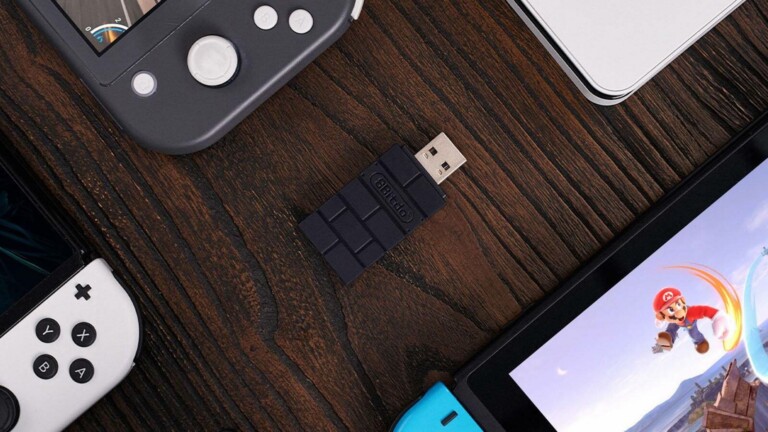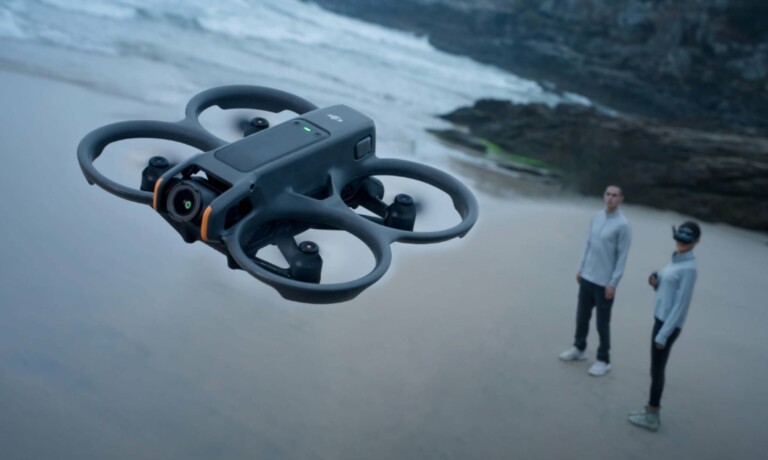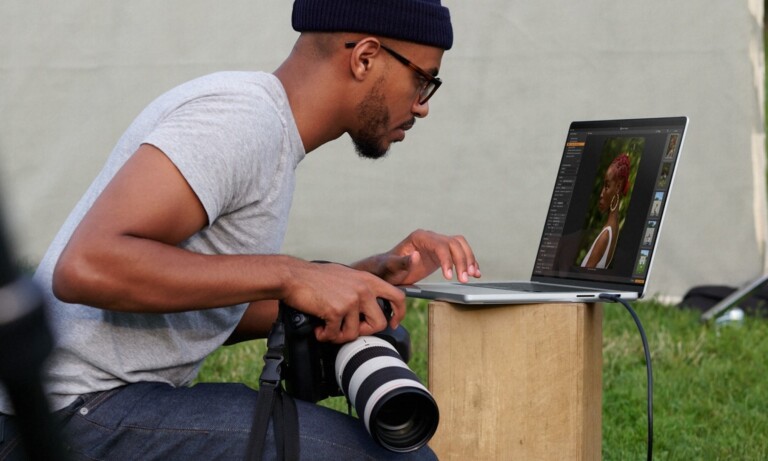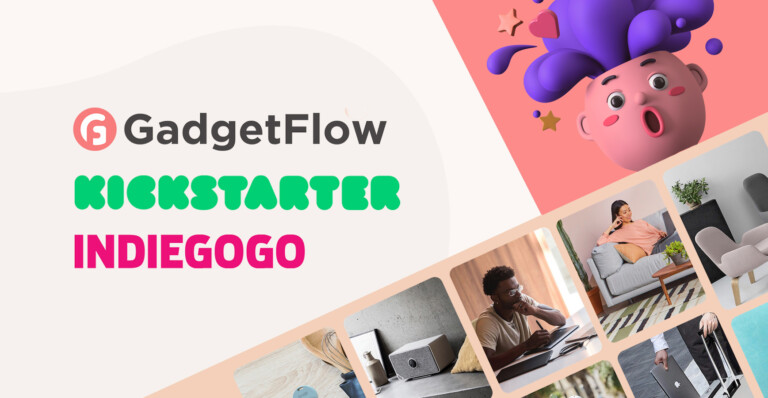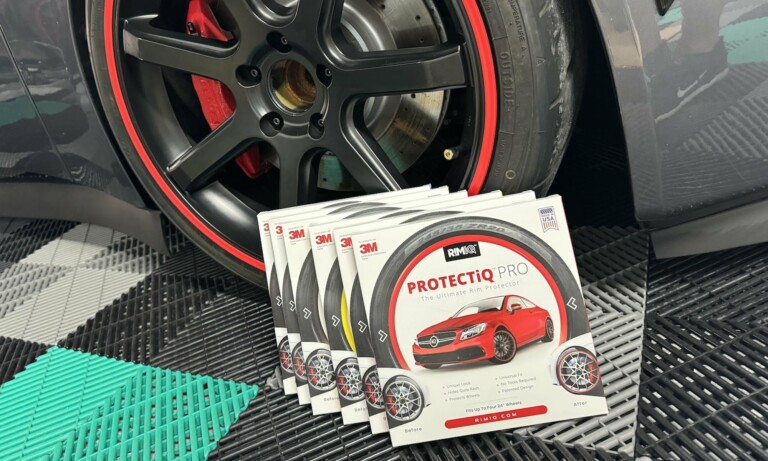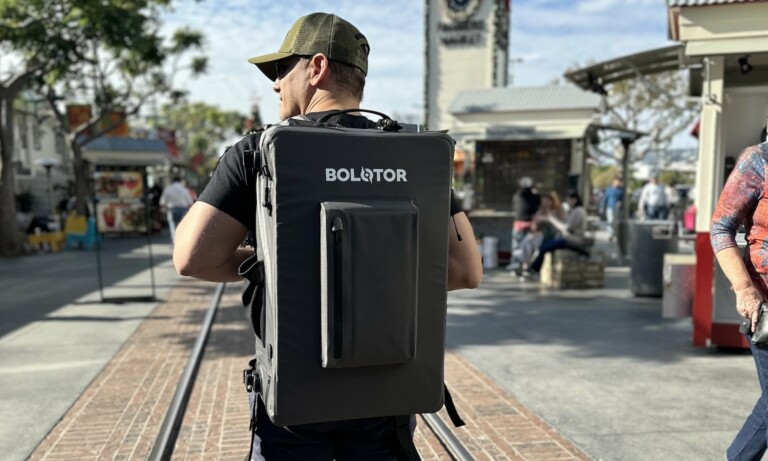Gadget Flow Podcast Episode 9 – Krishan Arora from Arora Project
On this weeks episode, we sat down with Krishan Arora from The Arora Project to discuss crowdfunding and digital marketing in 2018.

- The Arora Project is a team of data-driven experts in crowdfunding. Check our full review on them out here.
- You can find more information as well as contact Krishan Arora through his LinkedIn profile.
Could you give a brief snapshot of who you are and what you do?
Krishan: Sure, my name as Alex said is Krishan. My career has taken quite a rollercoaster ride in different verticals and different industries, but the core foundation of most of the positions that I was ever in, was digital marketing. I was with Apple, education marketing for a while, then on the agency level doing social media marketing, and then transferred into the startup world, and was a chief marketing officer of a funded startup, and then moved over to the Arora Project, over the course of a decade. That was sort of the high-level breakdown. My current venture is called the Arora Project and what we do is we help create and convert global online communities with a core expertise, within the crowdfunding world.
As of right now April 19th, we are the only agency on the planet that´s listed as an expert both on Indiegogo and on Kickstarter. Both Indiegogo and Kickstarter have expert directories that they recommend, of agencies you work with, and we’re I think the only player still on there that are on both. We have raised millions of dollars in the crowdfunding world, across dozens of projects, we´ve also done equity crowdfunding. We are now starting to do some cryptocurrency projects, in the fully compliant pre-ICO world that we’re getting involved with now. We’ve also done a lot of crowdfunding projects outside the Kickstarter and Indiegogo model on our own platforms that we´ve created, and done it for nonprofits, and now we are creating our own software tools, so things like that. That’s sort of a detailed answer of what we are and what we´re doing right now.

Crowdfunding marketing strategy tips
How did you come to decide that you wanted to create the agency? Would you call it an agency (The Arora Project)?
Krishan: I was always very hesitant of going down the agency world because of many different reasons. But, that’s what we’re transforming into. But the culture at the Arora Project is very Hubspot, Google-esque, right? We work out of the Cambridge Innovation Center. It’s a really nice environment. We have a pretty solid team of people. Everybody’s under 35, it’s a very young team of digital marketing experts. We have a really nice culture which sort of counter balances the traditional agency vibe a little bit. But, yes, I think that it’s safe to call us an agency.
What made you start the Arora Project?
Krishan: Earlier on ’08, ’09, 2010, I was at Harvard at the time and a lot of my colleagues were launching businesses. Because of just the ecosystem of Cambridge, MA and Boston in general, is a very big startup scene there. A lot of them saw crowdfunding as an avenue to acquire capital, non-dilutive capital, and also acquire a good portion of loyal customers that they can get feedback from, and do a lot of sort of testing with, and that’s when the whole crowdfunding world was first starting off, to really pick up mainstream traction. Briefly consulting a few projects with some friends, they knew I had a digital market background. At the time I was working for a huge ad agency, doing a lot of social media marketing work. A lot of my friends knew that I had a digital marketing background, so they would just briefly ask me: “What do you think we should do for our Kickstarter campaign?”And once a week I would meet some friends completely free, just over coffee and recommend best practices for email list acquisition, digital marketing, Facebook ads, PVC campaigns, content generation and things like that. After five of those; over the course of six months, three of those raised a few $100,000, and I was like wow – I have friends closing seed rounds of half a million dollars and celebrating after months of pitching and here I have a friend of mine that his Kickstarter campaign raised $400,000. So, the realization was coming upon me, this was becoming more and more of a popular avenue for savvy entrepreneurs to go down and acquire capital. At that time I said, “Great, I see a huge market opportunity here,” but we were already kind of late at the game. At that time (2011, 2010) a lot of things were already happening, from an agency level in the crowdfunding world. So we decided to jump ship around 2014. After a year or two of just consulting with projects, and being on my own, and still keeping my job, and consulting with friends, and sort of being a one-man shop, transferred over into the whole agency model, left my job. The first year we did 5 million, the next year we did over 15 and this year we’re on track to double last year. Growth has been great ever since we started, and just seeing the market opportunity and knowing that my digital background can translate into that, is why we made the jump.
What makes you different from other agencies that do similar things?
Krishan: Two major factors that make us stand out: I personally know the CEOs of let’s say; the top 5 agencies out there, we´re all a close-knit circle. You can just go in Indiegogo experts or Kickstarter experts and the people that are listed on there are usually the people that are at CES getting leads and talking to each other, collaborating on some campaigns at some point. So we kind of all know each other from the east coast to the west coast. It’s a small and tight-knit circle of qualified agencies that have launched millions of dollars repetitively in campaigns. But one of the things that differentiate us, and I have nothing but the utmost respect for everybody else out in that space, is one: we do a very deep dive on data analytics and digital marketing. That’s something that we haven’t really seen from a feedback perspective from our clients. The clients might have worked with one agency on the first campaign, they’re working with us on the second campaign, and sort of the unanimous feedback we get over and over again is, “Your data-driven approach is definitely something that is a competitor differentiator.” We have a very strong data visualization tool that we use. We do a lot of AB testing before we launch the campaigns. We have a very effective community engagement drip campaign that we put into place, the buyer referral tool. All of this is backed up with analytics, through Google analytics, Facebook analytics, Bitly analytics, our own data visualization tool, and we digest all of these different metrics to truly understand what’s happening pre-campaign and specifically during-campaign. During campaign optimization, based on incoming conversion data. You know, other people are doing this but I don’t think as robustly as us and some people might do it exclusively in the Facebook ads world, but we are doing it on a holistic campaign level. On the e-mail side, on the campaign traffic side, on the Kickstarter or Indiegogo page side. What the conversion rates are, what the traffic sources are and adapting in real time with data reports, updated daily.

Arora Project helps you plan crowdfunding well
So that’s one of the biggest competitor differentiators, because one of the things we really wanted to do from the get-go, was demystify the crowdfunding world like – why is this sock campaign raising a half a million dollars, but this life-saving technology device only raised $10,000? From a product standpoint there was a mismatch in quality of product, and need for product, and funding. That just broke down to “can you understand the data of what’s happening on the campaign?” and optimize towards it. But some are lucky but that’s one major differentiator on what we do. Two is: we are sort of a full-service shop. Not everybody does full service. Some only do PR, others only do Facebook Ads. The Facebook Ads world is very saturated; there are a couple of big players out there you know – shout out to shout out to Iddo from Jellop – those guys are good friends of ours; they just crush it in the Facebook Ads world. But we do everything from two months before the campaign goes live we do the photo shoot, the video. We create your e-mail list; we set up a crowdfunding campaign page with our graphics design team. We engage Kickstarter, Indiegogo, and make sure that they’re involved in some sort of process with us. You know, they know that we´re coming in their pipeline. Then we run the campaign, execute the e-mail campaign, execute the PR campaign, manage the comments responses, do the analytics update and then post campaign as well. We offer a plethora of digital marketing services to continue the momentum that we have already built. Several of our current clients (I don’t really call them clients), campaign owners stay on with us for six to 12 months after crowdfunding campaign, because we did such a good job with messaging, and marketing, and things like that. So those two things: one, sort of the full service customized offering and the second one being our data-driven approach that leads into everything that we do.
How many customers have you worked with and what is your success rate?
Krishan: We´ve had a good run so far. Whenever we get behind a campaign, and this is a good point to note: whenever we´ve launched a campaign and understood that the price points are good, and the reward strategy is good, and the campaigner is ready to adapt, like “the price runs to high we have to slash them” or “we have to bundle different value propositions.” We have a 100% success rate. So whenever we get behind a campaign and we launch them and optimize them, we haven´t not met our funding goal. To date now we´ve had to launch some campaigns, cancel, re-launch because we´ve learned that this is not working, that’s not working, we need to change this value proposition, this is too bulky, and then re-launch, and then has been successful. But in terms of campaigns, that our hypothesis was correct saying, these price points are good, then the value proposition makes sense, every single one of them has raised much more than their funding goal.
Is there a specific campaign that you’ve worked on that stands out and are really proud of?
Krishan: One that really stands out to us, were two actually, was the GeoOrbital campaign. We did 1.2 million dollars for them on Kickstarter and then they ended up raising by themselves… Sorry, can you repeat the name of that? GeoOrbital. They´re good guys out of Boston. Shout out to Mike Burtov who is the CEO. Phenomenal team, phenomenal product, I was very timely and we ended up doing over a million dollars on Kickstarter, and then they ended up going to an equity crowdfunding platform and raising another million dollars after that, ended up going on Shark Tank after that. So you know, that’s just a perfect example of a great idea, backed with a great team, that’s being executed perfectly. They´re such a phenomenal team. That was one; another one that we worked on was called SPUD, the Spontaneous Pop-up Display. We raised $750,000 for them on Kickstarter. Now they’re going direct-to-consumer. Had a lot of traction involved with them. And even on the smaller campaign side that we´ve worked on, like ButcherBox, is one that we worked on. They raised almost a quarter million dollars which were grass-fed beef and chicken delivered to your door. Organic chicken and grass beef delivered to your door, which is so out the realm of a Kickstarter campaign. Most of them are technology, design, fashion products. The subscription meat delivery service wasn’t really something that was successful, but we were able to take it over the $200,000 mark and now they’re actually crushing it. Michael who is also the CEO of ButcherBox, a great guy, very successful entrepreneur. So we’ve had campaigns on all different industries, from food to fashion to technology, and each of them has sort of their unique story you know.
Where do you see crowdfunding five years from now? Do you think it’s still going to be a growing industry?
Krishan: Definitely, one thing I do see happening, and this is just my hypothesis of what might happen in the space, is: it’s going to get a lot more competitive and you’re going to see much bigger brands starting to get involved within the crowdfunding world. Indiegogo does a great job on having partnerships with Brooks Brothers, and Target, and sort of all the big different organizations that see the value in crowdfunding. The crowdfunding world has two sides: the negative side (not from a malicious standpoint), but campaign owners that over-promise, and under-deliver, and never deliver the products, deliver them a year late, deliver lower quality and that’s not to their fault. A lot of entrepreneurs are first-time, sort of product launching endeavors or campaigns that they’re doing, and within that, is really hard to foresight some of the logistic, shipping, manufacturing, especially when you’ve never done some of that before. That is one layer of it that I definitely think should be worked on. Kickstarter, Indiegogo are doing a lot of work in making sure that the prototypes are built and the entrepreneurs have all access to Dragon on Kickstarter or Arrow Electronics on Indiegogo, which are sort of fulfillment and manufacturing big sort of players. So the world is adapting towards making that sort of more streamlined. But where I think this is going in the next five years would be, bigger and bigger brands doing product launches on crowdfunding platforms. I think that’s going to have a positive effect in terms of funding raised, and notoriety. But it´s also going to have a negative effect for the little guy, that five years ago, could have raised $100,000 or $200,00, it’s going to be significantly harder to gather the attention of the organic Kickstarter or Indiegogo backer or even raise a large enough e-mail list to be successful.
How would you suggest someone choose if they should launch on Kickstarter or Indiegogo, and what would be the big differences?
Krishan: We´re very data driven; so we look at just the first layer is market research. So if we look at Kickstarter and if we´re launching a headphones campaign, we say “what have been the top ten headphone campaigns in the last year on Kickstarter?” and “what has been the total funds that they’ve raised in the headphones category?” or some category and then do the same competitive analysis for Indiegogo, and then if we see that Indiegogo has outraised Kickstarter by x amount within our vertical, that’s a huge indicator that says “this platform has a better fit for our product and our industry.” Secondarily also, Indiegogo offers a few things Kickstarter doesn’t. Kickstarter also offers a few things Indiegogo doesn’t. If there’s a large enough advertising budget for one of our projects it might make sense to go to Indiegogo, because of the Facebook pixel that’s allowed, and we can optimize and sort of really scale up our ad campaigns on the Indiegogo site, but that also is possible on the Kickstarter side as well. But we primarily stick with the market research and let the community dictate to us. We also poll our community as well, you know, “where would you like to see?” We have a community that we work with and engage with especially with the cool stuff you guys are doing at Gadget Flow with Evan, getting your community involved and saying “where would you want to see this?” It’s a mix of consumer feedback backed up with hardcore market research.
What are two of the most important things for a campaign to be successful other than having a great product?
Krishan: Here´s the biggest point of feedback that I give to all of the campaigners that we speak to. We get dozens of inquiries a week and we can only really work with one or two of them. That’s why our success rates are so high, and that’s why we´re able to be very selective on who we work with, is because in the crowdfunding campaign you have to sort of take a step back from the campaign level, from the product level, from the team level, and understand that the overarching messaging strategy that you implement on your crowdfunding campaign has to intertwine through several different layers perfectly. The first layer is the value proposition, and probably the most important one. And the way we break it down here and the way I give presentations on this all the time in a bunch of universities, the way I personally view this topic is “is your product removing friction from a current process at a price point that’s low enough that people are going to see value and converting over to your product or the existing process?” So like really breaking that down and saying, if you’re coming up with a cell phone case, what distinguishes you? Because you really have to understand the crowdfunding world before you do a crowdfunding campaign. These are the earlier adopters, these are the people on Reddit, these are the people on Google Groups, these are the guys commenting paragraphs on YouTube and Reddit that are highly engaged, highly detailed-oriented and are very meticulous. A bulk of them, all sort of fit this portfolio and you can´t just say “I´m creating a laptop that’s faster than the Mac.” They´re going to push you on gigahertz, and hard drives, and RAM and you know, “why this operating software? Why not that?” “Why is it not available for Linux?” “Why is it available only for Mac and Windows?” and “this happened last year” They do their own market research. So first really holding in your value proposition. If you´re just slightly innovating upon an existing product, I would say crowdfunding is not the goal or the avenue for you. If you are radically innovating upon an orthodox antiquated product that people are using, because there is no other choice, that makes a lot of sense. Prime example; sticking with the GeoOrbital campaign, a lot of bike owners would love their bike to be electric but they have an affinity with their bike, they don’t want to let go of their bike to buy a newer electric bike. The GeoOrbital campaign was simply, flip-out the front wheel of your bike with our wheel and it makes your current retro bike, electric. That was not being offered on the market, it was priced correctly, it was removing friction from a current industry and adding value at a price point that was acceptable to the user. So that is the first layer that people would have to understand. What are you trying to do and is the friction that you are removing from the current ways things are done high enough that your product will be adopted at the right price point that you’re positioning at? So that is sort of the most important part, everything else is secondary to that. As long as you get that right, you´re going to see some positive reception from the crowdfunding world. And the second thing is preparation. Build your community ahead of time, and there is no excuse not to. You don’t need to hire a PR agency if you can afford one. Go to Google news, type in keywords related to your product in your industry and when you do that you’ll see all the articles that have ever been written about, let’s say “electric bikes,” and if you go to an article and click underneath the subject of the article, the author’s name, six out of ten times, they’re going to have their e-mail and their Twitter handle. There is no reason why you shouldn’t build a list of 500 people that have written about your product, or a competitive product, or a complementary product, or even your industry. Create an e-mail campaign and reach out to 500 hundred press over the course of a month. Even if you confirm 5% of them, that’s 25 articles, right? You don’t have to hire a PR firm to do that, so persistence, preparation and dedication pre-campaign if you don’t have the budget to bring on someone like the Arora project. The value proposition and then dedication would be sort of the make or break factors of a crowdfunding campaign.
Where can people find you and contact you if they are looking for help on their next campaign?
Krishan: Definitely, you can always feel free to go to our website, it aroraproject.co, not .com but co. We have a live chat on our website. You can go to our Facebook page @AroraProject and message us directly to our Facebook page and we have an under 24-hour response time. Even through our live chat, which is instant, or through our support ticket through our website. We help people, even the campaigners that we are not working with because they might not have the budget or the resources you know. As long as I see dedication and passion and engagement like “look at the research I’ve done, look at my product.” We always try to help out even if it’s just by e-mail and strategy, everywhere we can.
For more such interesting podcasts on crowdfunding, marketing, product placement, and everything in between, subscribe to the Gadget Flow podcast now.
